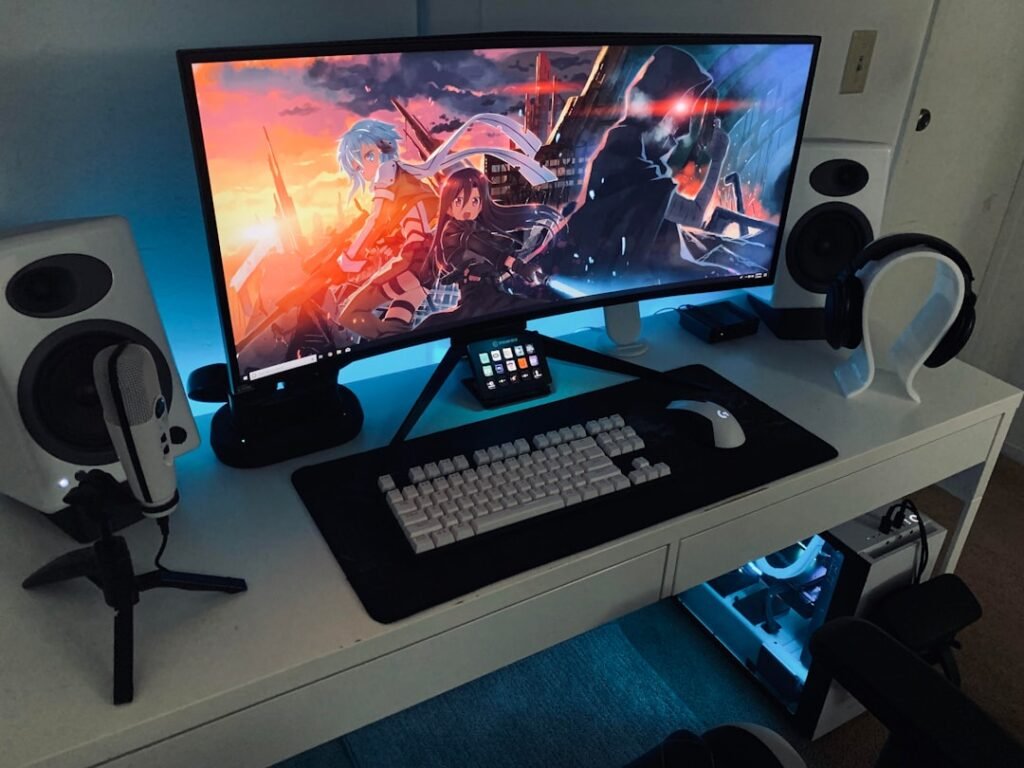Now Reading: Comparing Nintendo Switch OLED and Switch Lite
-
01
Comparing Nintendo Switch OLED and Switch Lite
Comparing Nintendo Switch OLED and Switch Lite

As a passionate gamer, I have always been intrigued by the evolution of gaming consoles, and the Nintendo Switch has certainly made waves since its release. Among its various iterations, the Nintendo Switch OLED and the Switch Lite stand out for their unique features and target audiences. The Switch OLED, with its enhanced display and versatility, appeals to those who seek a premium gaming experience, while the Switch Lite caters to gamers who prefer a more compact and budget-friendly option.
Both consoles have their own merits, and understanding their differences can help potential buyers make an informed decision. The Nintendo Switch OLED was launched as an upgrade to the original model, boasting a vibrant 7-inch OLED screen that enhances the visual experience. On the other hand, the Switch Lite is a handheld-only version that prioritizes portability and ease of use.
As I delve deeper into the specifics of each console, I find it fascinating how Nintendo has managed to cater to different gaming preferences while maintaining a cohesive brand identity. Whether I’m looking for a home console experience or a portable gaming solution, both devices offer something unique.
Key Takeaways
- Nintendo Switch OLED offers a larger, vibrant OLED display while Switch Lite is a compact, handheld-only version of the original Switch.
- The Switch OLED features a sleek, adjustable stand and a wide, adjustable viewing angle, while the Switch Lite is designed for on-the-go gaming with built-in controls.
- The OLED display on the Switch offers vivid colors and deep contrast, while the Switch Lite has a smaller, more compact screen with a lower resolution.
- Both the Switch OLED and Switch Lite offer smooth performance and long battery life, with the OLED model having a slight edge in graphics and display quality.
- The Switch OLED is compatible with all Nintendo Switch games and controllers, while the Switch Lite is limited to handheld mode and compatible with most Switch games.
Design and Portability
Switch OLED: Premium Build and Vibrant Colors
The Switch OLED boasts a sleek design with a wider kickstand, allowing for more stable tabletop play. The console’s premium build quality and vibrant Joy-Con controllers add a playful touch. I appreciate how Nintendo has considered ergonomics, making the device comfortable to hold during extended gaming sessions.
Switch Lite: Portability and Convenience
In contrast, the Switch Lite is designed with portability in mind. It is lighter and smaller than its OLED counterpart, making it easy to slip into a bag or carry around. The integrated controls eliminate the need for detachable Joy-Cons, which can be a hassle when on the go.
A Personal Touch with Color Options
The Switch Lite is available in several eye-catching colors, adding a personal touch to my gaming experience. As someone who enjoys gaming while commuting or traveling, the lightweight design of the Switch Lite is incredibly appealing.
Display and Graphics

One of the most significant differences between the two consoles lies in their display technology. The Nintendo Switch OLED features a stunning 7-inch OLED screen that delivers vibrant colors and deep contrasts. When I play games on this console, I am often mesmerized by how lifelike the graphics appear.
The enhanced visuals make games like “The Legend of Zelda: Breath of the Wild” and “Super Mario Odyssey” come alive in ways that are hard to describe. The improved viewing angles also mean that I can share my gaming experience with friends without compromising on quality. On the other hand, the Switch Lite has a 5.5-inch LCD screen, which, while still decent, does not match the brilliance of the OLED display.
The colors are good, but they lack the depth and vibrancy that I have come to expect from modern gaming consoles. However, for someone who primarily plays games in handheld mode, the difference may not be as pronounced. I find that while the graphics on the Switch Lite are satisfactory for casual gaming, they do not provide the same immersive experience as those on the OLED model.
Performance and Battery Life
Performance-wise, both consoles are powered by similar hardware, which means that they can run most games without any significant issues. However, I have noticed that the Nintendo Switch OLED tends to handle graphics-intensive games slightly better due to its superior display capabilities. The frame rates remain stable, and I rarely encounter any lag or stuttering during gameplay.
This performance consistency is crucial for me, especially when playing competitive titles or engaging in fast-paced action sequences. Battery life is another critical factor to consider when choosing between these two consoles. The Nintendo Switch OLED boasts a battery life of approximately 4.5 to 9 hours, depending on usage and game type.
This range allows me to enjoy longer gaming sessions without constantly worrying about recharging. In comparison, the Switch Lite offers similar battery life but is slightly more efficient due to its smaller screen size. For my on-the-go lifestyle, both consoles provide adequate battery performance; however, I find myself leaning towards the OLED model for its enhanced visual experience during longer play sessions.
Game Compatibility and Controllers
One of the most appealing aspects of both the Nintendo Switch OLED and Switch Lite is their extensive game library. Both consoles are compatible with a wide range of titles available on the Nintendo eShop and physical cartridges. As someone who enjoys exploring various genres—from action-adventure to indie games—this compatibility ensures that I have access to an impressive selection of games regardless of which console I choose.
However, there are some limitations with the Switch Lite that I must consider.
While this may not be an issue for solo gamers or those who primarily play in handheld mode, it is something I keep in mind when deciding which console best suits my gaming habits.
Price and Value

Justifying the Investment
For me, this investment can be justified if I prioritize visual quality and versatility in my gaming experience. The added value of having a premium display and improved audio makes it worth considering for serious gamers who want an immersive experience.
A More Affordable Option
On the other hand, the Switch Lite is significantly more affordable, making it an attractive option for budget-conscious gamers or those new to the Nintendo ecosystem. While it may lack some of the advanced features of its OLED counterpart, it still offers access to an extensive library of games at a fraction of the cost.
Excellent Value for Casual Gamers
For casual gamers or those who primarily play on-the-go, I find that the Switch Lite provides excellent value without compromising too much on quality.
Target Audience and Use Cases
Understanding the target audience for each console helps clarify which device might be right for me based on my gaming preferences and lifestyle. The Nintendo Switch OLED appeals to dedicated gamers who appreciate high-quality visuals and versatility in gameplay options. Whether I’m playing solo or hosting game nights with friends, this console caters to various gaming scenarios with its ability to switch between handheld and docked modes seamlessly.
Conversely, the Switch Lite is designed for those who prioritize portability and simplicity over advanced features. It’s perfect for gamers who enjoy playing on public transport or during short breaks throughout their day. As someone who often finds myself gaming during commutes or while waiting in line, I can see how the lightweight design and ease of use make it an ideal choice for casual gaming experiences.
Which Switch is Right for You?
In conclusion, choosing between the Nintendo Switch OLED and Switch Lite ultimately depends on my individual gaming needs and preferences. If I value high-quality graphics, versatility in gameplay modes, and am willing to invest in a premium device, then the Switch OLED is undoubtedly the better choice for me. Its stunning display and enhanced audio create an immersive experience that elevates my gaming sessions.
However, if I am looking for a more budget-friendly option that still provides access to an extensive library of games in a portable format, then the Switch Lite would be an excellent fit. Its lightweight design makes it easy to carry around without sacrificing too much quality in gameplay. Ultimately, both consoles have their strengths and weaknesses, but they cater to different types of gamers like myself.
By considering my gaming habits and preferences carefully, I can make an informed decision about which Nintendo Switch model aligns best with my lifestyle and gaming aspirations.
If you’re interested in learning more about the science behind tough games, check out this fascinating article on decoding game difficulty. Written by Freya, a talented author for Gamers.co, this piece delves into the intricacies of what makes certain games challenging and how developers can create a balanced level of difficulty for players. For more insightful gaming content, be sure to read through Gamers.co’s terms and conditions.



























